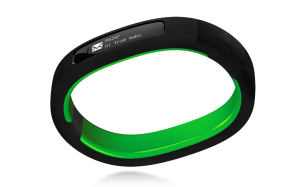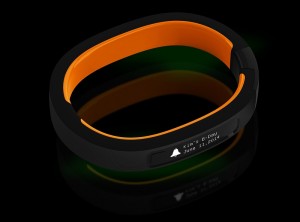Wayyy back in January we featured a post on Razer’s newly unveiled Nabu fitness band. It was an interesting touch, especially since Razer is generally known for their line of gaming peripherals. They’ve obviously taken a different approach with their latest device which is a smartwatch/fitness band hybrid.
Back when it was first unveiled, Razer didn’t offer a definitive release date. Several reports stated that the company was shooting for an October launch, the 31st to be exact with a price tag of $99. As is clear now, that was not the case and October is long gone.
That said, the device did pass through FCC testing in October, and it’s companion apps have cropped up in their respective mobile stores including Google Play, the Apple App Store and Windows Phone Store. It means that the Razer Nabu is likely on its way to market, if not this month then soon. In light of that, we thought it was high time to share all the information we have on the device.
Aside from the Moto 360 – which is now available – the Nabu was one of our most anticipated wearables for this year. When it first showed up during CES 2014, the market was totally different. Now, Razer has to compete with the likes of the Microsoft Band, Basis Peak, Fitbit Charge and many others.
Razer Nabu: Features
 Let’s start with the most important element, and the one that should theoretically help it sell well: the Razer Nabu features. It’s a thin wearable band that includes a bevy of fitness tracking options such as calories burned, steps taken, floors climbed, distance traveled and even sleep patterns. Those are great, especially for the fitness minded but it also supports some basic smartwatch features too.
Let’s start with the most important element, and the one that should theoretically help it sell well: the Razer Nabu features. It’s a thin wearable band that includes a bevy of fitness tracking options such as calories burned, steps taken, floors climbed, distance traveled and even sleep patterns. Those are great, especially for the fitness minded but it also supports some basic smartwatch features too.
The band will deliver notifications and alerts for calls, texts, Google Maps directions, social media notifications for platforms like Twitter, Facebook, and Instagram, as well as Skype and WeChat. If you’re not familar with WeChat don’t feel bad, it’s an incredibly popular social messaging app that’s big in China.
The most interesting feature of the Nabu, is that the screen is located on the backside of the device. This means that all messages and notifications will remain private to the wearer. One only needs to turn their rest to see the content, which can be dismissed with a simple wrist shake.
Of course, most of those features are standard to a lot of wearables on the market. What really makes the Nabu special? It will include a social discovery function that allows two Nabu users to swap contact information just by sharing a high-five. In other words, if you meet another Razer Nabu user you can exchange contact information by forcing both device to interact with another through gestures. It’s like handing someone a business card, except digitally.
Razer Nabu: Hardware
 Perhaps just as important as the features, is the hardware powering the device. Although admittedly, with something like the Razer Nabu having the utmost processing power available isn’t exactly a concern.
Perhaps just as important as the features, is the hardware powering the device. Although admittedly, with something like the Razer Nabu having the utmost processing power available isn’t exactly a concern.
The Nabu includes a 128 x 32 pixel OLED display mounted on the backside of the device. The display can show notifications, messages, alerts and small indicators or icons for various things. The unique OLED screen does not require much power, which means the band should be able to last anywhere from five to seven days on a single charge – at least according to Razer.
The body is comprised of a thermoplastic rubber material that is “durable and flexible,” and it also happens to be hypoallergenic – so there shouldn’t be any rash, skin-irritation or discomfort issues like we saw with the Fitbit Force when it first launched.
The body is also water resistant. If you’re wondering what that means, Razer says, “it is okay to get it wet; just don’t submerge it in water.” Furthermore, they also say that, “you can shower with it and run in the rain with it; but don’t swim, bathe or enter the sauna with it.” The display is scratch and shatter resistant, and has also been coated with an optical anti-glare material.
Other hardware features include an accelerometer, altimeter and vibration motor, companion apps for multiple platforms (including Android, iOS and Windows Phone), and two size variations for small to medium and medium to large wrists.
Razer Nabu: Companion Apps
 As we mentioned above, there are companion apps available for Android, iOS and Windows Phone devices. However, Razer has also made an SDK available which means third-party developers will be producing seperate apps to work with the device. In other words, this should help expand the overall functionality pushing boundaries on what it can do.
As we mentioned above, there are companion apps available for Android, iOS and Windows Phone devices. However, Razer has also made an SDK available which means third-party developers will be producing seperate apps to work with the device. In other words, this should help expand the overall functionality pushing boundaries on what it can do.
Apps like Nabu Utility and Nabu Fitness allow you to configure what notifications and alerts appear on the wearable. You can filter various app and message notifications – for instance, if you don’t actually want to receive text message alerts on your device you’d use these apps to disable that.
Timi Run Everyday is a third-party app that works as a sort-of fitness and digital game mashup. You upload your fitness activity to the app, which offers you in-game power-ups and score boosts in the 2D side-scrolling game. It’s more like an augmented reality game than anything, that allows you to spruce up your morning run – or exercise in general.
Of course, more apps will eventually be delivered and one can expect the selection to open up when the device finally hits the market. Some lucky Beta participants were able to get their hands on an early model of the device in July, 2014 for $49, so it’s possible some of these are already out there being used in the wild.
Razer Nabu: Affordable Price
 Razer made it clear from the get-go that they want the Nabu to be reasonable and affordable. While it does offer some excellent features, it really can’t compare to some of the other devices on the market currently – so Razer’s strategy makes a lot of sense.
Razer made it clear from the get-go that they want the Nabu to be reasonable and affordable. While it does offer some excellent features, it really can’t compare to some of the other devices on the market currently – so Razer’s strategy makes a lot of sense.
Many reports have led us to believe the price will be less than $100. It is entirely possible that assumption is wrong, meaning Razer could price the device much higher. Judging by the composition and design, we highly doubt it’s going to be more than $150 if Razer even jumps the price that high.
At launch it will be available in two different sizes: a medium to large measuring 81.0mm (L) x 63.4mm (H) x 13.6mm (W) and a small to medium measuring 75.3mm (L) x 59.1mm (H) x 13.6mm (W). Each model will be bundled with two extra clasps – similar to a metal wristwatch – that allows users to adjust the size of the band for a perfect fit. In addition, there are four different color trims to choose from, each coming with a black overlay: green, orange, grey and black. The green and orange look especially slick, following the same neon color scheme Razer is known for.
We still don’t have an exact release date, but seeing as the official apps are now available – and what with the FCC testing being passed – it should be available real soon. In fact, we would be extremely surprised if the device didn’t launch in time for the holiday season.
We’ll have more information for you on the Razer Nabu launch as soon as it’s available.
UPDATE: After quite some time of waiting, the Razer Nabu actually has an official release date. It was made available through Razer’s official site on Dec 2, and first went to the company’s premiere customers. You can pick it up for $99 through their official store now, or wait until it hits a select few retailers within the next few months.
